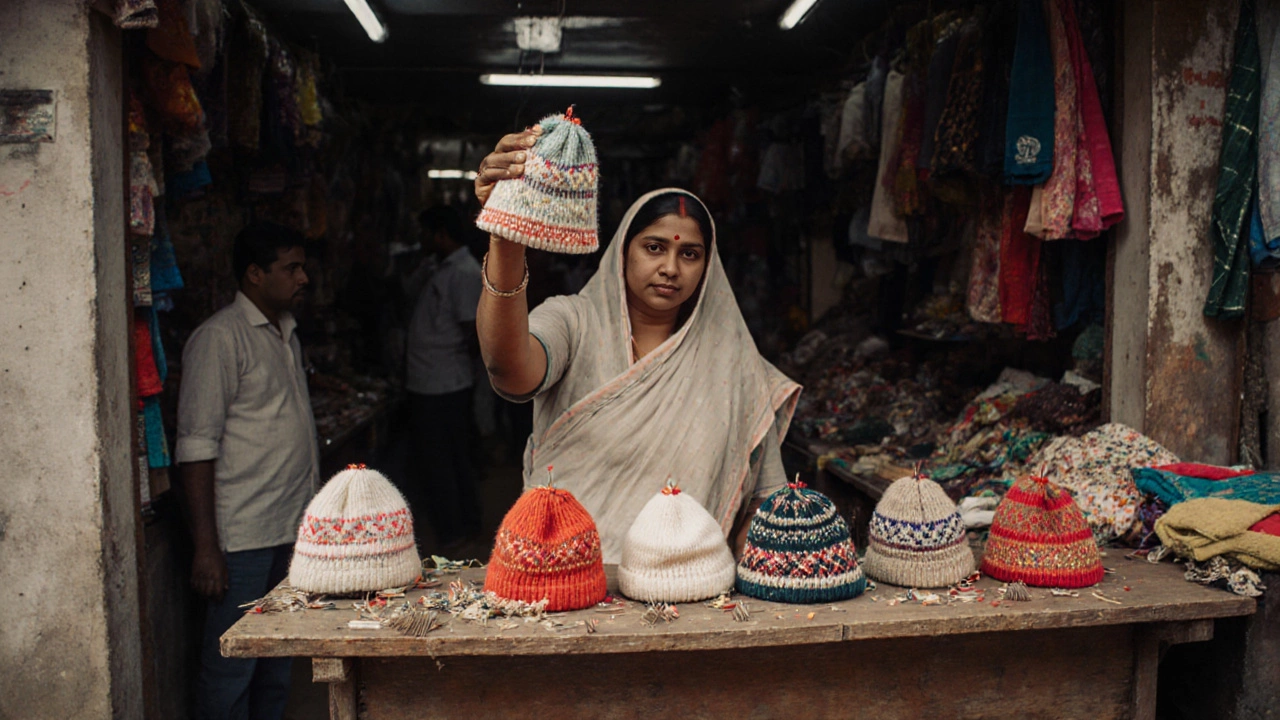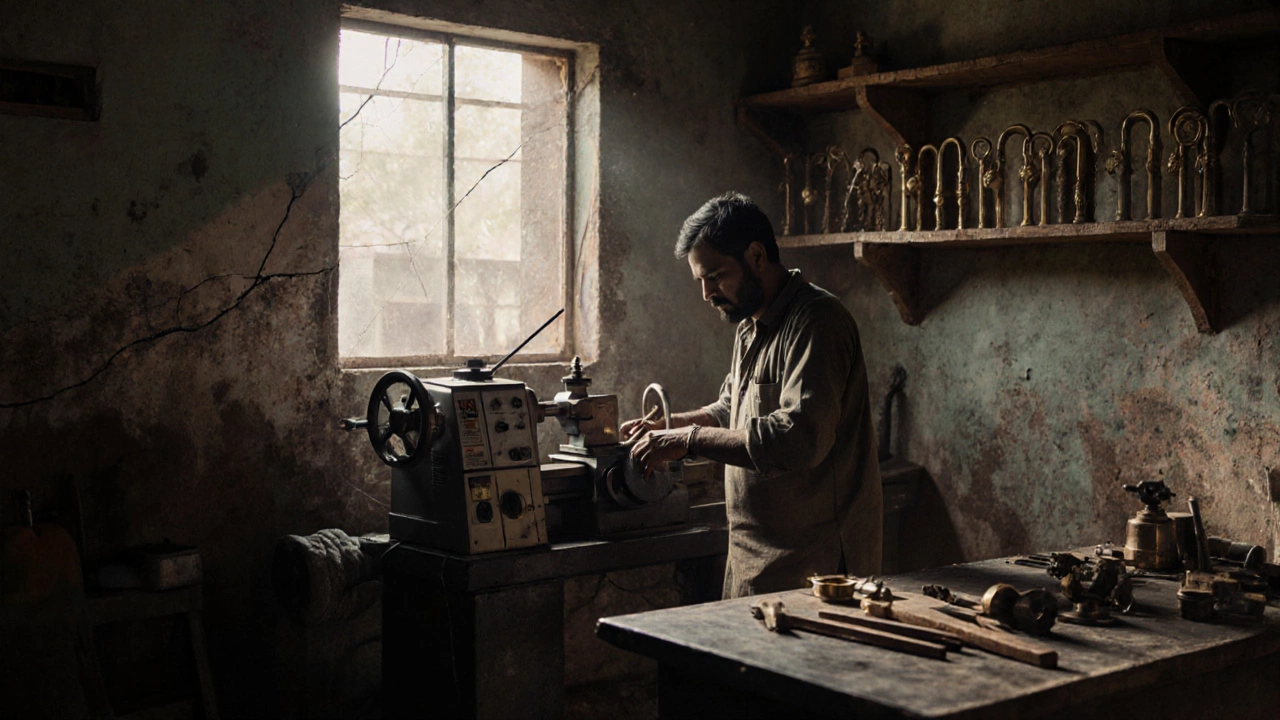Pre-Selling Revenue Calculator
How Pre-Selling Funds Your Business
Calculate how customer deposits fund your first production run without loans or investors. Based on the article's "sell before you make" strategy.
You want to start a manufacturing business but don’t have a dollar to your name. Sounds impossible? It’s not. Thousands of small manufacturers across India, Vietnam, and Mexico started with nothing but a idea, a hammer, and a whole lot of grit. You don’t need a bank loan, a rich uncle, or a pitch deck to get started. You just need to know where to look-and what to avoid.
Start with what you already own
Most people think manufacturing needs expensive machines, warehouses, and teams. But that’s not true for small-scale production. Look around your garage, basement, or even your kitchen. A manual metal bender, a used sewing machine, a second-hand injection mold, or a simple CNC router bought off Facebook Marketplace can be your entire factory. One entrepreneur in Coimbatore started making brass door handles using a 1980s lathe he bought for ₹8,000. He paid in cash, no paperwork. Within six months, he was selling to local hardware shops. His startup cost? Zero rupees in new equipment.Don’t wait for perfect tools. Use what’s broken, outdated, or discarded. Local scrap yards, industrial auctions, and even municipal waste centers often sell functional machinery for a fraction of the price. A friend of mine bought a used plastic extruder from a factory shutting down in Pune. It needed minor repairs-he fixed it with welding rods and old motor parts. That machine now makes 500 plastic clips a day. He sells them to auto part suppliers for ₹12 each.
Sell before you make
The biggest mistake new manufacturers make? Building inventory before they have customers. You don’t need to produce 1,000 units to prove demand. You need one buyer who will pay upfront.Find a local shop owner who sells similar products. Walk in with a prototype-something you made in your garage using cheap materials. Say: “I can make this for you, better and cheaper. If you like it, I’ll make 50 units. You pay me ₹5,000 upfront, and I deliver in two weeks.” That’s your funding. That ₹5,000 covers raw materials, labor, and transport. No loans. No investors. Just a deal.
This is called pre-selling. It’s how many of India’s top small manufacturers got started. A woman in Ludhiana began making hand-stitched woolen caps by showing samples to local winter gear retailers. She got 10 orders before making the first cap. She used the money from those orders to buy yarn and pay a seamstress. Within a year, she was exporting to Nepal.
Use barter and trade
Money isn’t the only currency. Skills, space, and time are just as valuable. If you need a welding job done but can’t afford a welder, offer to make 20 metal brackets for them in return. Need storage? Trade 100 units of your product for warehouse space. A man in Surat traded 300 plastic buckets for three months of workshop rent. He didn’t have cash, but he had product. The shop owner needed stock for his hardware store. Win-win.Look for local artisans, mechanics, or even college students who need work. Offer them a cut of future profits instead of upfront pay. A student in Bangalore helped a startup design packaging in exchange for 15% of first-year sales. That’s how you stretch zero rupees into a real business.

Work with local raw material suppliers
Raw materials are your biggest cost. But you don’t have to buy them all at once. Many suppliers will let you take materials on credit if you’re reliable. Visit local wholesale markets-textile yards, metal scrap dealers, plastic pellet vendors. Ask: “Can I take 50 kg of material now and pay after I sell the finished product?”One manufacturer in Tirupur started making cotton tote bags by convincing a yarn wholesaler to give him ₹15,000 worth of thread on 30-day credit. He made 200 bags, sold them to local bookstores, paid back the supplier on day 28, and kept the profit. He did this three times before he could afford to buy materials outright.
Small suppliers care more about repeat business than big payments. Build trust. Show up on time. Deliver what you promise. That’s your collateral.
Apply for government grants and incubators
The government doesn’t give cash to everyone, but they give it to people who know how to ask. In India, programs like MSME Startup India, PM Mudra Yojana, and State Industrial Policies offer non-repayable grants, subsidized machinery, and free training for small manufacturers.You don’t need a fancy business plan. Just show a prototype, a list of potential buyers, and proof that you’ve tried to make something yourself. One applicant in Madurai got ₹2 lakh under the Tamil Nadu MSME scheme just by showing a handmade wooden toy he made with scrap wood and a hand drill. The government didn’t care that he didn’t have a factory-they cared that he had a product and a plan to scale.
Check your state’s industry department website. Most have a “Startup Support Cell.” Call them. Walk in. Ask: “What grants can I get to start a small manufacturing unit with no money?” They’ll point you to the right form. Fill it out. Submit it. Do it again next month if you get rejected.
Partner with existing manufacturers
You don’t have to own everything. You just need to control the process. Find a small factory that’s underutilized. Maybe they run one shift a day and have idle machines. Offer to use their equipment during off-hours in exchange for a small fee per unit made.This is called “contract manufacturing.” You bring the design, the customer, and the sales. They bring the machine and the space. You split the profit. A man in Kanpur started making brass lamp bases by partnering with a factory that made brass pipes. He used their press machines at night. He paid ₹5 per unit. He sold each base for ₹120. His profit? ₹115 per unit. He didn’t own a single machine-and he made ₹40,000 in his first month.

Use social media to test and sell
You don’t need a website. You don’t need an app. You need Instagram, WhatsApp, or Facebook. Post pictures of your prototype. Show the process-your hands shaping metal, stitching fabric, molding plastic. People love real, raw content.One woman in Jaipur started selling hand-painted clay pots on Instagram. She posted videos of her making them in her backyard. No studio. No lights. Just her and a phone. Within three weeks, she had 120 orders. She used the money to buy better clay and hire a helper. Her first batch cost ₹2,000. She made ₹28,000 in sales.
Don’t wait for perfection. Post early. Post often. Reply to every comment. Ask people: “Would you buy this if it was ready next week?” Their answers tell you if it’s worth making.
What not to do
Don’t take a personal loan. Don’t borrow from friends unless you’re ready to lose the relationship. Don’t buy expensive machinery “just in case.” Don’t hire employees before you have steady orders. Don’t spend money on logos, websites, or branded packaging until you’ve sold your first 50 units.Focus on one product. One customer. One delivery. Master that. Then repeat.
Real example: From zero to ₹5 lakh in 90 days
Ramesh, a former mechanic in Indore, wanted to start making bicycle chain guards. He had ₹0. He had a broken welding machine. He fixed it with spare parts. He walked into 12 local bike repair shops. He showed them a sample he made from an old steel can. One shop owner said: “I’ll take 50 if you make them stronger.” Ramesh used the ₹7,500 he got to buy steel sheets. He made the guards. Delivered them. Got paid. Then he asked for 100 more.He repeated this cycle every two weeks. By day 90, he was selling 300 units a month. He didn’t have a bank loan. He didn’t have investors. He had 17 repeat customers and a reputation for reliability. Today, he employs three people and exports to Nepal.
That’s how you start a manufacturing business with no money. Not with a pitch. Not with a grant. With action. With one step. Then another. And another.
Can I start a manufacturing startup with no money and no technical skills?
Yes, but you’ll need to partner with someone who has the skills. Find a local technician, welder, or tailor who can help you make your product. Offer them a share of future profits or a small payment per unit. Many skilled workers are looking for steady work and will trade their time for a stake in your business. You bring the idea, the sales, and the hustle. They bring the hands.
What’s the cheapest manufacturing business to start?
The cheapest options are those using low-cost, locally available materials: hand-sewn bags from scrap fabric, wooden toys from offcuts, metal hooks from discarded wire, or painted clay pots. Avoid anything that needs electricity, complex machines, or imported materials. Start with what you can make using your hands, basic tools, and free or cheap raw materials. Your first product should cost less than ₹500 to make and sell for at least ₹300.
How long does it take to make money with a zero-budget manufacturing startup?
If you follow the pre-selling method, you can make your first rupee in under a week. Making consistent profit takes 30 to 60 days. That’s the time it takes to build one prototype, find one buyer, deliver, get paid, and repeat. Most people give up before day 20. The ones who keep going-usually within 90 days-are making real money without any outside funding.
Do I need a business license to start small-scale manufacturing?
For very small operations (under ₹5 lakh annual turnover), you don’t need a formal license in most Indian states. You can operate as an unregistered unit. But once you start selling regularly, register as a micro-enterprise under Udyam. It’s free, takes 15 minutes online, and gives you access to government schemes, bank loans, and market access. Don’t wait to register until you’re big. Register when you’re making your first sale.
What if my product doesn’t sell?
If no one buys it, your product isn’t the problem-your market research is. Go back to the shops, the street vendors, the Facebook groups. Ask people what they actually need. Change the design, the price, or the material. Don’t get attached to your idea. Get attached to solving a real problem. One man made 100 bamboo toothbrushes. No one bought them. He switched to bamboo soap holders. Sold out in two days. The product changed. The need didn’t.
Can I scale a zero-budget startup into a real company?
Absolutely. Every large manufacturer started small. The difference is discipline. Reinvest every rupee of profit back into the business-buy a better tool, hire a part-time helper, get better packaging. Don’t spend on yourself. Scale slowly, but consistently. Once you’re making ₹1 lakh a month in profit, you’ll have options: bank loans, investors, or even government grants. But you’ll earn them by proving you can run a real business-not by asking for money.
